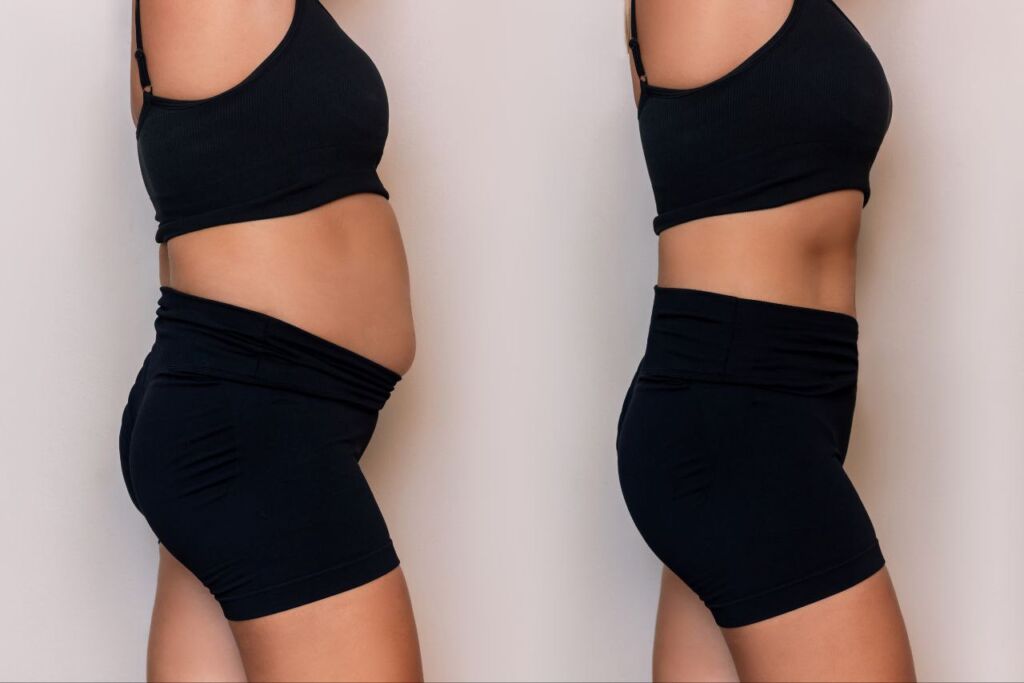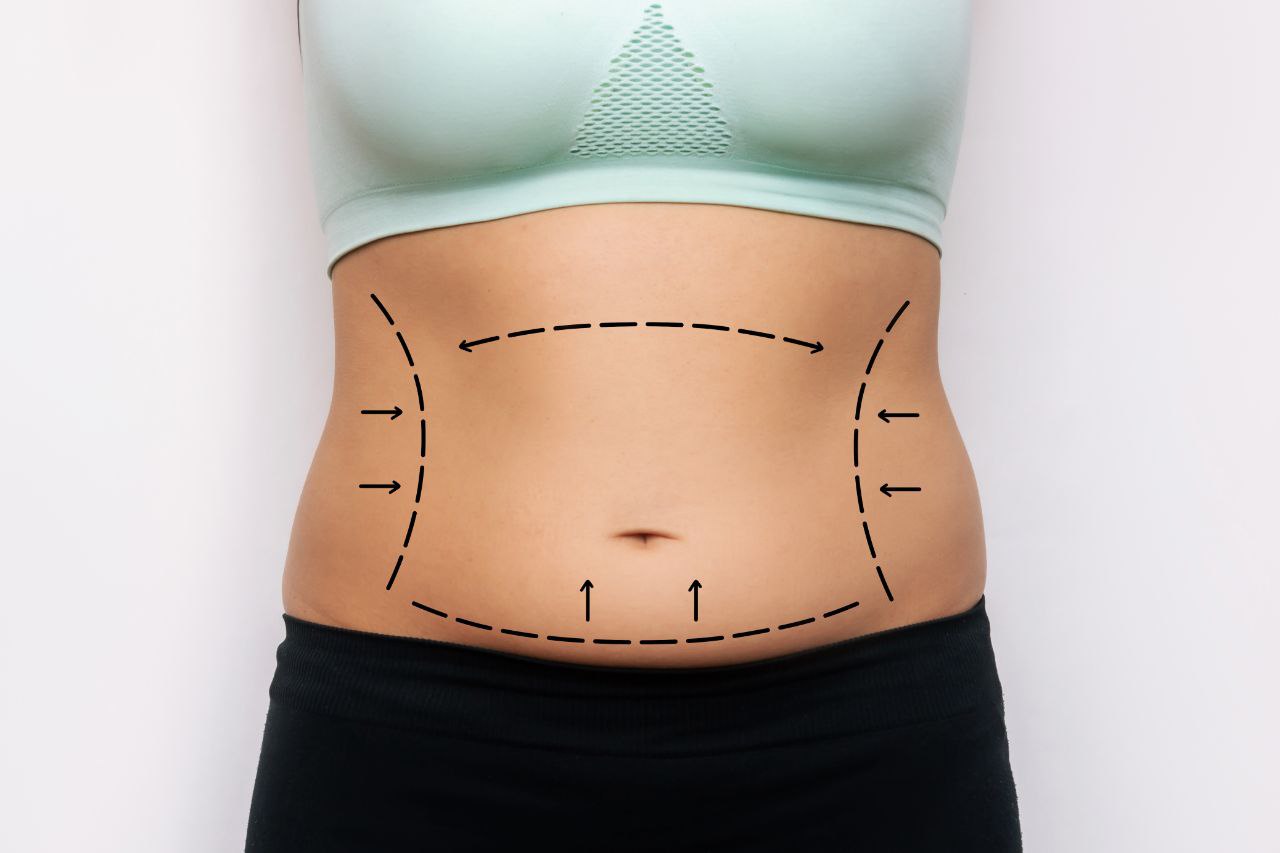Many people dream of achieving a flat and toned stomach. While diets and exercise routines can help, stubborn loose skin often remains. When these efforts are not enough, surgical solutions come into play with the tummy tuck standing at the forefront.
A tummy tuck (Abdominoplasty) is a surgical procedure that removes excess fat and sagging skin while tightening the abdominal muscles. Additionally, when appropriate, surgeons may combine it with liposuction to further enhance the waistline.
Importantly, a tummy tuck is not purely cosmetic. For some patients especially after pregnancy or significant weight loss it helps restore abdominal wall support, improve posture, and even reduce lower back pain. Results vary individually, and this procedure should not be considered a weight loss method.
If you are seriously considering it, remember: a tummy tuck is major surgery. Understanding the steps, recovery timeline, cost factors, and potential risks is crucial before making your final decision. This guide provides a clear overview of what you need to know about tummy tuck surgery in Turkey.
Is a Tummy Tuck Right for You?
If sagging skin around your abdomen or muscle laxity after pregnancy or major weight loss bothers you, a tummy tuck may be the right solution.
This procedure is not a weight-loss tool it is meant to remove excess skin, tighten muscles, and refine the shape of your midsection.
You may be a good candidate if you:
Are in good overall health at a stable weight, are not planning a pregnancy in the near future, can stop smoking before and after surgery, and have skin laxity or abdominal muscle separation that exercise alone hasn’t corrected.
It may not be suitable if you:
Primarily want to lose weight, plan to become pregnant soon, have uncontrolled health issues that could affect healing, or cannot quit smoking around the time of surgery.
These factors are usually discussed during your first consultation to help set realistic expectations and determine the right timing for surgery.
Types of Tummy Tuck Procedures
Every body tells a different story, which is why plastic surgeons have developed different types of tummy tuck surgeries to fit each individual’s needs. Here are the most common techniques:

Full Tummy Tuck
Addresses both the upper and lower abdomen, removing excess skin and tightening muscles if needed.
How it’s done:
The surgeon makes a horizontal incision across the lower abdomen (hip to hip) and a small one around the belly button, repairs the abdominal muscles if needed, removes excess skin and repositions the navel for a natural look, and may add liposuction to further refine the waist.
Surgery & Recovery:
The procedure typically lasts 2–5 hours, depending on complexity, and your surgeon may recommend a short hospital stay.
Mini Tummy Tuck
Focused on the lower abdomen only, ideal for mild to moderate sagging below the belly button.
How it’s done:
The surgeon makes a shorter incision along the lower abdomen, typically without repositioning the belly button, then tightens and removes the excess skin for a smoother, more refined contour.
Surgery & Recovery:
Shorter procedure and faster recovery compared to a full tummy tuck.
Extended Tummy Tuck
A broader version of the full tummy tuck, addressing the abdomen, flanks, and sometimes the lower back.
How it’s done:
The surgeon makes an extended incision across the lower abdomen and along the sides, tightens the abdominal muscles and removes excess skin, repositions the belly button for natural alignment, and may add liposuction to refine overall contour.
Surgery & Recovery:
Compared with a full tummy tuck, this approach involves a longer procedure and recovery and it requires a greater commitment to aftercare.
Note: This information is for educational purposes only. A certified plastic surgeon’s consultation is the only way to determine which option suits you best.
Preparing for Your Tummy Tuck
Smart preparation makes recovery smoother. Think of it as organizing your health, home, and schedule ahead of time.
2–4 weeks before surgery:
- Full health check-up; disclose any conditions or medications.
- Quit smoking; it slows healing and increases risk of complications.
- Maintain stable weight with proper nutrition and hydration.
- Buy your recommended corset.
- Plan your time off work and arrange support for the first 2–3 days.
1 week to 2 days before surgery:
- Complete required blood tests or imaging.
- Stop blood thinners or certain supplements as advised.
- Eat protein-rich meals, reduce salt, and get enough sleep.
Day of surgery:
- Follow fasting instructions carefully.
- Shower without applying creams or makeup.
- Wear loose clothing and bring your medical documents.
- Arrange for a companion to drive you home.
Recovery & Aftercare
Recovery requires patience, gentle movement, and consistent wound care.
Daily care:
Rest in a semi-bent position to reduce tension on the incision, prioritize protein-rich meals with adequate hydration, and avoid smoking throughout recovery, as it negatively affects healing quality.
Activity:
Begin with gentle walking to support circulation; however, avoid strenuous workouts especially abdominal exercises until your surgeon clears you.
Medical corset:
Wear as directed to reduce swelling and shape your figure.
Incision care:
Keep the incision clean and dry, follow your surgeon’s bathing timeline, and skip pools and saunas until you’re cleared.
Medications:
Take painkillers and prescribed medications as directed.
Return to daily life:
Plan to return to light work in about 2–3 weeks, avoid driving while you’re on strong pain medication, and ease back into exercise gradually over the following weeks.
How Much Does a Tummy Tuck Cost in Turkey?
Prices vary by tummy tuck type; however, they also shift with the surgeon’s expertise, the city, and the package model. In particular, all-inclusive packages covering surgery, anesthesia, hospital stay, hotel, transfers, and follow-up can change the final cost significantly.
| Procedure | Price Range (USD) |
|---|---|
| Full Tummy Tuck | $2,500 – $3,800 |
| Mini Tummy Tuck | $3,500 – $5,200 |
| Extended Tummy Tuck | $4,000 – $6,000 |
These ranges are guide prices. We’ll confirm your exact quote after a brief in person or virtual assessment and a plan made just for you.
Request pricing
By sending, you agree we may contact you on WhatsApp with pricing.
Got it! We’ll WhatsApp you the pricing shortly.
How to Choose Your Surgeon and Clinic in Turkey
Smart choices start with clear information and a genuine sense of trust. The goal isn’t just a good price it’s a qualified team and a treatment plan that fits your case and expectations.
What to look for:
- Credentials & Specialization
A board certified plastic surgeon with reputable professional memberships delivers safer care. An accredited clinic or hospital also raises the bar for operating rooms, sterilization, and logistical support. - Experience & Case Types
Your surgeon’s experience should match the procedure you need (mini, full, or extended tummy tuck, with or without liposuction). A track record of cases similar to yours gives a clearer idea of likely outcomes. - Documented Before/After Photos
Look for recent images with consistent lighting, angles, and clear dates to assess contouring style and scar placement not just “perfect” photos. - Communication & a Personalized Plan
You should receive a simple, transparent explanation of the steps: incision placement, whether you need muscle repair, and recovery time. Most importantly, expect patient answers without rushing or exaggerated promises. - Anesthesia Team & Safety
A dedicated anesthesiologist and a structured pre-op protocol (labs, medications, allergies) reflect a strong safety culture. Emergency equipment and up-to-date sterilization standards are non-negotiable. - Financial Transparency
Ask for a written quote that details what’s included (surgery, anesthesia, hospital, hotel, transfers, follow-up, medical corset, initial medications) and what might incur extra fees. Compare the contents not only the number. - Post-Op Follow-Up
Confirm the follow-up schedule, how easily you can reach the team after you return to your hotel or home, and the channels for support (emergency line/medical WhatsApp). These add comfort and safety. - Language & Logistics Support
A medical interpreter who understands terminology, written instructions in your language, and a single point of contact to arrange appointments and transport all of these reduce stress throughout the experience.
Red flags:
- Guaranteed “perfect” results.
- Rushed booking without proper evaluation.
- Edited or inconsistent before/after photos.
- Hidden fees or vague pricing.
- Poor accessibility to the medical team.
Frequently Asked Questions (FAQ)
Noticeable improvements start within weeks, with final results settling over 3–6 months (sometimes up to 12).
Discomfort is manageable with prescribed pain medication.
Yes, in selected cases to enhance contouring.
Yes, usually recommended to reduce swelling and support healing.
Pregnancy after a tummy tuck is possible but may stretch the skin and muscles again.
Generally 1–2 weeks depending on your procedure and recovery progress.
Request a written quote outlining everything included—surgery, anesthesia, hospital, hotel, transfers, medical corset, and medications.
Patients Insight
Based on patient experiences, the biggest concern is the tightness and discomfort during the first few days. Comfort gradually improves, and many notice visible changes within the first few weeks—especially when following the surgeon’s aftercare instructions.
Ready for Your Next Step?
A tummy tuck can be life changing, restoring confidence and comfort. The best choice is one that balances medical expertise with transparent communication and a care plan tailored just for you.



